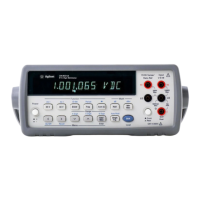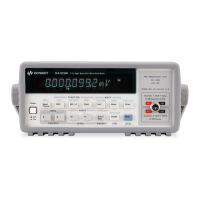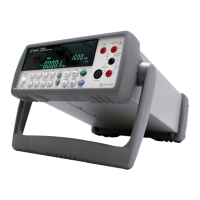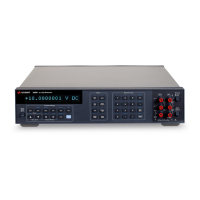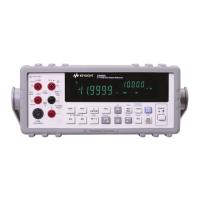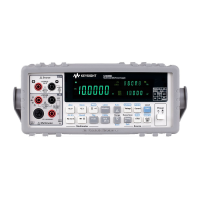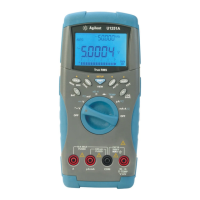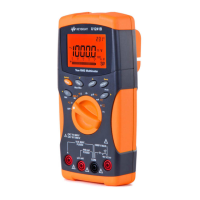34410A/11A/L4411A Service Guide 49
Quick Start 2
Other Basics of Operation
This section covers basic troubleshooting and general use.
If the Multimeter Does Not Turn On
Use the following steps to help solve problems you might encounter when
turning on the multimeter. If you need more help, see the Service Guide
for instructions on returning the multimeter to Agilent for service.
1 Verify that there is ac power to the multimeter.
First, verify that the multimeter’s Power switch is in the “On” position.
Also, make sure that the power cord is firmly plugged into the power
module on the rear panel. You should also make sure that the power
source you plugged the multimeter into is energized.
2 Verify the power–line voltage setting (34410A/11A only).
The line voltage is set to the proper value for your country when the
multimeter is shipped from the factory. Change the voltage setting if it is
not correct. The settings are: 100, 120, 220, or 240 Vac (for 230 Vac
operation, use the 220 Vac setting).
See “To Replace the Power-Line Fuse (34410A/11A)” on page 50 if you need to
change the line–voltage setting.
3 Verify that the power–line fuse is good (34410A/11A only).
The multimeter is shipped from the factory with a power–line fuse
installed. The supplied fuse is a 250 mA
, 250V, slow–blo
w, 5x20mm
fuse, Ag
i
lent part number 2110–0817. If you determine that the fuse is
faulty, replace it with one of the same size and rating.
See “To Replace the Power-Line Fuse (34410A/11A)” on page 50 if you need to
replace the power–line fuse.
The current input path is also fused. The supplied fuse is a 3 A
, 250V,
fast-acting, 5x20mm fuse, Agilent part number 2110–0780, and is housed in
a standard screw–in fuse holder on the the rear panel. If you determine that
the fuse is faulty, replace it with one of the same size and rating.
